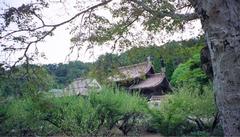 |
Shizutani means 'quiet valley', and it's a good name for this place. It's a very isolated valley along the tiny road from Yoshinaga to Bizen. | ||
| The primary claim to fame of the Shizutani school is that it was the oldest free public school in the world. Mitsumasa Ikeda of the Ikeda clan (daimyo of this area under the Tokugawa shogunate) had the school built to educate the children of the commoners in the province -- not just the children of the samurai class. | 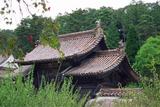 |
||
| The other claim to fame of the school, though, is that the Ikedas had bizenyaki potters from the nearby Imbe area create, by hand, the tile roofs for the buildings. bizenyaki is a famous Japanese pottery style which does not use glazes -- the subtle and beautiful coloration is the result of mixing different clays from the area (one of my side trips from Hattoji was to go bizenyaki shopping in Imbe). The resulting rooflines and colorations are beautiful, and I spent several hours sketching the tile roofs at the school. | |||
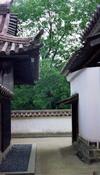 |
 |
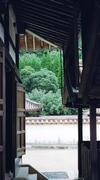 |
|
| Construction projects had a different pace in those days. Nagatada Tsuda, a vassal of the Ikedas, was assigned to build the school, which he did in the period from 1670 to around 1703. As with Kourakuen gardens, built by the Ikedas in Okayama city, the composition of the views throughout the school is carefully constructed. | |||
| It was a Confucian school, dedicated to family, respect for elders and superiors, and discipline. |  |
In addition to being beautiful, the tile roofs are constructed that even if the first layer of tiles crack, no water gets through the roof. | |
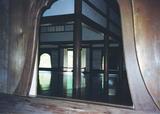 |
No doubt lots of students got their knuckles bloodied in the main lecture hall (above, left, right) for looking outside instead of at the teacher. The Ikedas declared that only charcoal was to be used for fuel here so that the ceiling would not be darkened by soot -- and 300 years later, they're not. |  |
|
 |
One more canonical Japanese experience: I got to Shizutani school in the morning, and was the only visitor. I was wandering around, sketching, enjoying the solitude, basking in the peace and quiet... | ||
|
...and then the busloads of Japanese tourists showed up. Every group had their uniformed young woman tour guide with a portable megaphone, pointing out to them every last historical and aesthetic feature. In other words, exactly like large Japanese tour groups elsewhere in the world. Sigh. I left not long after they showed up -- but even so, they were already getting back onto the bus. They were getting hustled through eight or ten tourist attractions per day on their retirement tours... |
 |
||